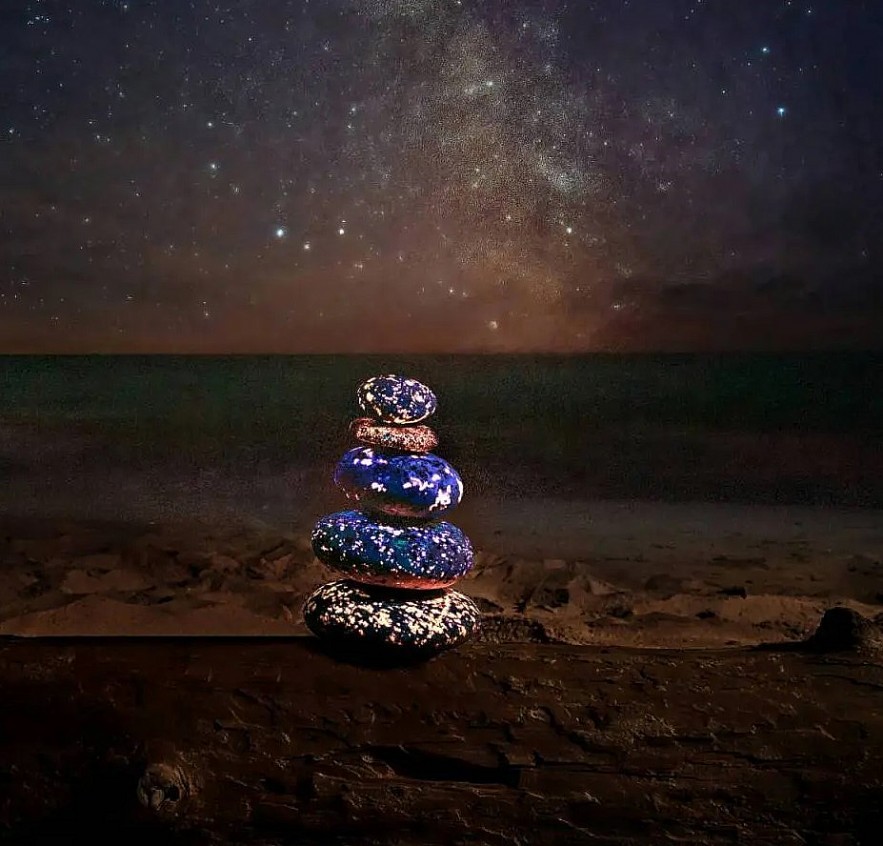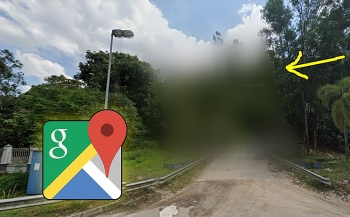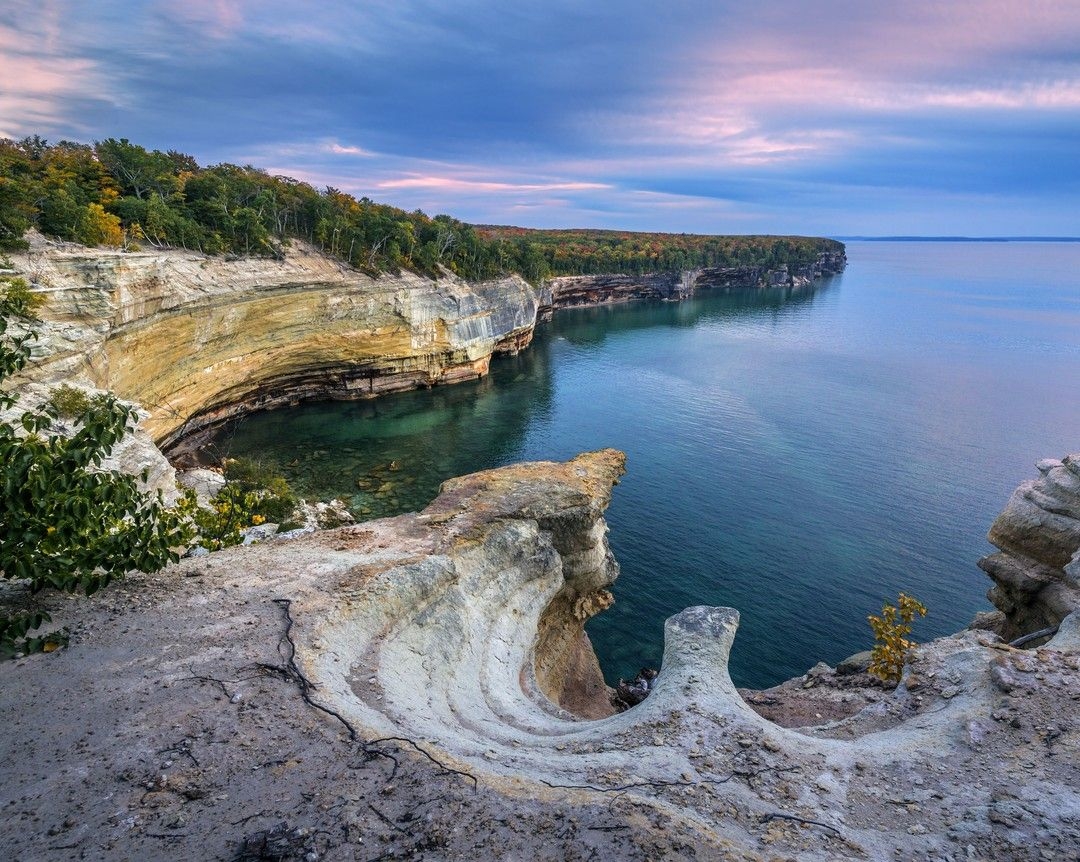The Mysterious Glowing Rocks in Lake Superior - How to Find Michigan's Yooperlites
Yooperlites, or glowdalites, are luminescent rocks found in Michigan's Upper Peninsula. They are a type of syenite stone with high levels of sodalite, a mineral that glows under ultraviolet light. Yooperlites come in a variety of colors, such as orange, yellow, green, and blue.
Yooperlites were discovered for the first time in 2017 by Erik Rintamaki, a gem hunter from Michigan. Rintaki was searching for rocks on the shore of Lake Superior at night with a UV flashlight when he noticed some rocks glowing brightly in a variety of colors.
 |
| Researchers from Michigan Technological University and the University of Saskatchewan studied and analyzed the stones listed above to better understand their composition and origins. In a Mineral News article, they revealed that the rocks were simply syenite with sodalite. It contains various minerals, including microcline feldspar, sodalite, nepheline, cancrinite, and pyroxene. All are responsible for Yooperlite's distinct glow when exposed to UV light. |
He had never seen anything like them before, so he sent samples of his findings to Michigan Technological University and the University of Saskatchewan for analysis. They confirmed that the rocks are syenite with sodalite inclusions and were formed approximately 1.1 billion years ago during a period of volcanic activity.
Rintaki chose the name Yooperlites, which is a slang term for people from Michigan's Upper Peninsula (U.P.), also known as Yoopers. He even trademarked the name and began selling the stone both online and at shows. He also conducts tours and workshops to teach people how to locate and identify Yooperlites. His discovery sparked a lot of interest and excitement among rock music fans and media.
 |
| To the naked eye, these oxygen, silicon, chlorine, sodium, and aluminum stones appear bluish-gray with white flecks. As a result, sodalite is frequently used in mosaic products; however, when exposed to long-wavelength ultraviolet rays, the stone illuminates, revealing red-yellow veins that appear extremely magical. |
But why are these rocks glowing? As previously stated, this is due to the high concentrations of sodalite, a blue silicate mineral commonly found in igneous rocks formed by molten magma, such as syenite and granite. Yooperlites appear ordinary in daylight, but when exposed to ultraviolet light, they reveal their hidden beauty.
Yooperlites are primarily found on the shores of Lake Superior in Michigan, particularly in the Grand Marais, Paradise, Whitefish Point, and Brimley areas. They are also found inland in areas where glacial deposits have carried them away.
According to Earthlymission, they can also be found in the majority of the United States' Great Lakes, as well as scattered throughout the world. However, they are difficult to find because they blend in with other rocks and gravel.
 |
| Yooperlites are formed as a result of volcanic eruptions and glacial movements. They formed about a billion years ago, during a spectacularly violent geological period in which North America attempted to split itself in two. A rift formed between the continents, resulting in unimaginable volcanic eruptions and 360,000 cubic miles of lava, including an eruption that created a lava ocean over 1,700 feet deep. Despite this activity, the rift failed to divide North America, with the majority of it lying beneath present-day Lake Superior. The last ice age, approximately 10,000 years ago, swept these glowing rocks south, leaving behind the Yooperlite blocks we see today. |
The best way to find Yooperlites is to use a UV flashlight with a wavelength of 365 nanometers (nm), which is the optimal frequency for producing sodalite fluorescence. You should also search at night or in low-light conditions, as daylight will dim their glow. UV rays can harm your eyes and skin, so you should wear protective glasses and gloves when working with them.
When you see a glowing rock, you can pick it up and examine it closer. You can also use a loupe to see the details of sodalite crystals. Yooperlites display a wide range of colors and patterns when exposed to UV light, which may surprise you.
Be cautious, however, because collecting rocks in national parks or lakeshores is illegal. Yooperlites cannot be collected and kept on private land without the permission of the landowner. The same is true for historical sites like parks or designated conservation areas.
A Handbook for Locating Yooperlites in Michigan
Where Do You Find Yooperlites?
Although they can be found all over Michigan, yooperlites are most common around Lake Superior in the Upper Peninsula. When looking for Yooperlites, people frequently visit the beaches in the Keweenaw Peninsula and the vicinity of Grand Marais.
Luggage
• The most essential thing is a UV light! A 365nm UV light with filtration will bring out the best in the Yooperlites® and highlight their glowing color.
• Flashlight or headlamp: It gets dark outside! Make sure you have an extra light with you so you can safely return to your car.
• Bag: Something to store your Yooperlites® in is necessary! When you're near the water and in the sand, a mesh bag comes in handy.
• Rock scooper: Not required, but useful in certain situations, particularly when the desired rock is in the lake!
• Shoes that are appropriate: Since you'll probably be near the water, make sure your selections are waterproof and still provide good traction.
Snacks and water: You never know what might happen. Be ready at all times, especially if you're going outside!
• Wear warm clothing: The water gets chilly at night. To enhance your Yooperlite experience, dress in layers and stay warm.
• Glow sticks: It's simple to become lost, particularly at night. Glow sticks can assist you in locating the point at which you entered the beach and ensure a secure return to your car. To prevent them from washing out into the lake, make sure you place them away from the water.
Advice and Pointers to Bear in Mind
• Make sure you reach your destination before nightfall. Make sure you are familiar with the beach, have a plan before dusk, and know how to get back to your car.
• The springtime, when the ice has loosened and moved the rocks along the shore, is a great time to find rocks. Also, it's before the beaches get crowded. More rocks indicate less foot traffic! Please remember to stay a safe distance away from any remaining ice on the beach and refrain from climbing on it.
• After a storm, look for Yooperlites® where the waves have uncovered and disturbed new rock.
• Depending on where you plan to go rock hunting, cell service might be spotty. Verify that you can safely find your way back to your car and that someone knows where you are.
• Bring a friend along! With a rock hound friend, discover Yooperlites® twice as much fun. Having a companion on the beach is also advantageous in case of an emergency.
• Go cautious and keep yourself safe! There are hazards involved in nighttime rock searches near bodies of water. Pay attention to the waves and the weather.
 9 Most Mysterious Places In the World You Must Visit 9 Most Mysterious Places In the World You Must Visit These places are often associated with mysterious anecdotes, or rumors of ghosts, so they often attract many adventurous tourists. |
 Top 13 Most Creepy Mysteries That Have Finally Been Explained Top 13 Most Creepy Mysteries That Have Finally Been Explained Numerous eerie mysteries concerning particular individuals and locations on Earth have been unearthed. Some were unintentional, giving rise to eerie tales. Others had motives behind ... |
 Top 10+ Most Mysterious Lost Cities In The World Top 10+ Most Mysterious Lost Cities In The World Is it possible for a city to become lost? There are numerous justifications for abandoning a city. Natural disasters, war, climate change, and the breakup ... |
 60 Most Mysterious Places and Things That Blurred by Google Maps, Earth 60 Most Mysterious Places and Things That Blurred by Google Maps, Earth More than sixty hidden locations and items were obscured in Google Maps and Google Earth; here's the full list. |
























